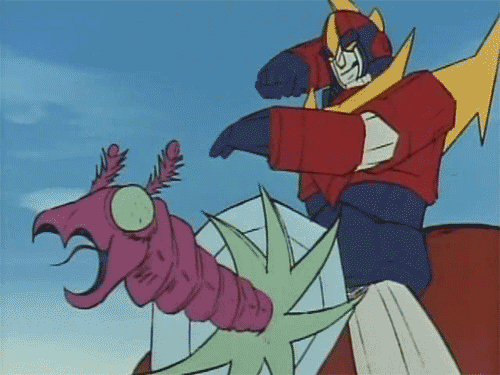
This weekend I took the time to watch one of the earliest mecha shows by the prolific Yoshiyuki Tomino, of Mobile Suit Gundam fame. At 26 episodes, Zambot 3 is one of the shortest Tomino shows and an easy binge watch. It is also an early attempt at deconstructing the mecha genre, dealing with what at the time at least was one of the most commonly ignored elephants in the genre: the aftermath of the damage caused by fights.
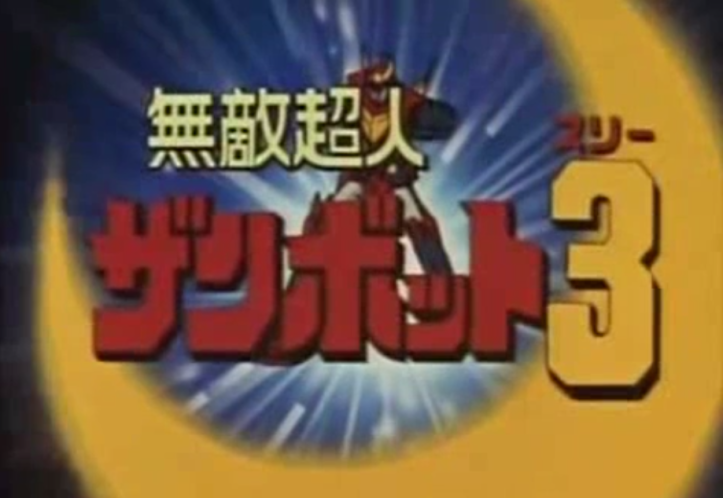
The heroes in this are given the hero treatment maybe 50% of the time. They are clearly hated by the people they are protecting, as they are aliens who pretended to be humans and are blamed by the humans for everything bad that happens. This is especially hard on Zambot 3’s pilots, who are children. The villain/s Gaizok take great advantage of this fact later in the series to inflict maximum psychological pain. That’s not even going into the psychological damage the kids deal with from their domestic abuse, trauma, and brainwashing and yeah this is pretty extreme for a kids’ show.
But it also serves as a beautiful redemption story – mainly for the Jin family, which includes the young pilots Kappei, Keiko, and Uchuta. But the best redemption story and character growth in the whole series was of former school bully and resident angriest human Kozuki, who goes from being a douche to being an understandable douche to being a hero by the end of the series. While Kappei and his cousins are grow through fighting the Gaizok, Kozuki grows as he goes through the grieving process multiple times and learns to become a survivor in what is quickly becoming a post-apocalyptic society.
Kappei is the main pilot, but as this is a Super Robot series, the titular robot can only be formed when more than robot combines. In this case, Kappei controls the Zambo Ace (sometimes called the Zambird) and the main controls of Zambot 3. His cousins (another interesting thing about this show is the extended family angle) Uchuta and Keiko fight in the secondary units Zambull and Zambase. The family affair extends to their mothership/HQ, the King Beal, whose crew includes Keiko’s grandparents and Kappei’s parents and brother. If you think this is a bad sign, then you know the extent of “Kill ‘Em All” Tomino’s evil.
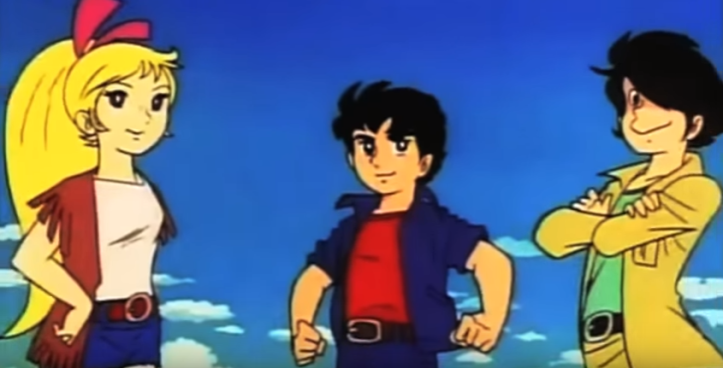
Kappei is a fairly well-developed protagonist, especially for an anime hero of that era. He’s no Amuro, but he has more depth than Mazinger Z’s Koji Kabuto. He’s also significantly younger than both of those pilots, which is evident in some of the more childish reactions that he has to things. However, he is clearly traumatized, and several episodes end with him weeping and his family laughing about it because child abuse was apparently socially acceptable on Planet Beal.
Cousins/co-pilots Uchuta and Keiko are given some drama but are mostly ignored and sometimes their usefulness is questionable. If it weren’t for the fact that Zambot 3 needs three pilots in order to combine, they’d be completely expendable. That’s not to say that the cousins are bad characters – in fact, the entire extended family is interesting and empathetic – but they always play second and third fiddle to Kappei in fights.
But secondary character development is not the worst part of this series – far from it, actually. The serious nature, great characterization, and intelligent deconstruction are almost completely overshadowed by the terrible animation, which is even worse than its fellow 70s contemporaries. This is not an exaggeration – the early episodes were barely watchable due to it. The stock footage was no problem, and some stills look quite detailed but more than half of the show is off-model to the extent that sometimes it was hard to tell what was going on. One exception may be episode 16, which begins the infamous Human Bomb episodes. The character and mecha designs were created by artists who later worked on Mobile Suit Gundam, including Yoshikazu Yasuhiko (who still works on Gundam art and had previously worked on Brave Raideen). The show had no animation director and most episodes were only animated by 1 to 2 artists (supposedly within a 2-hour time frame), which is an absolute shame. If there’s a 70s mecha that I’d most want a new remake of, it’d be Zambot 3.
However, animation can only detract from a story so much. As I mentioned before, it is incredibly intelligent and aware for its era. The multiple instances (and failures) of government interference were especially interesting, particularly when the angle was “child soldier vs. grizzled military man who never actually saw war,” which ends in a surprisingly gray area.
The Gaizok were also strong villains, even if Butcher the Killer (what a name!) was not. In order to avoid spoilers I won’t go into detail but the logic behind why Earth was targeted and who the Gaizok are rather solid. The Monsters of the Week, called Mecha-Boosts, are ugly in design but devastating in power. Even Butcher is fun and has a good backstory, but he’s such an ineffective and goofy leader that it led me to spend a large portion of the series wondering why he was chosen to be responsible for destroying the Earth.
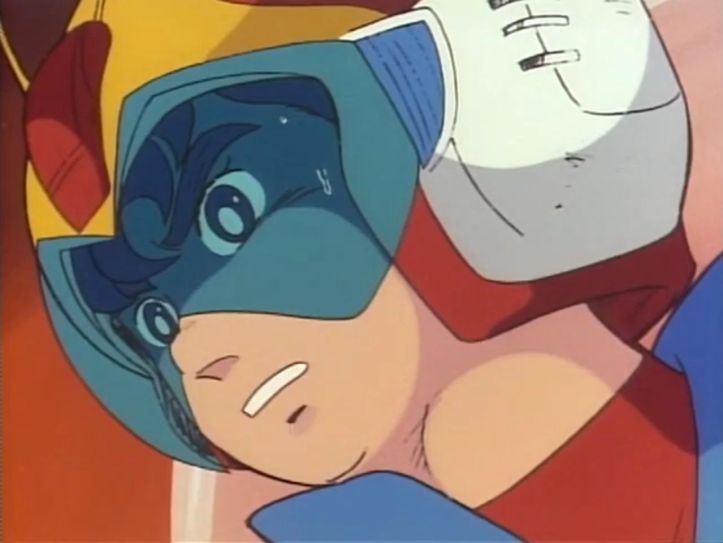
But ultimately the reason why I watched and why you have probably heard of this series is because of its massive death count. While Space Runaway Ideon’s death count is higher, Zambot 3 came out first and Tomino’s “Kill ‘Em All” nickname comes from this show. Most of the characters die by the end and go in a variety of ways. Many go in kamikaze attacks; many others die in senseless situations more reminiscent of real life than most of us would like to admit. The most painful deaths are the human bombs. In a move that is way too similar to modern warfare, the Gaizok eventually turn to human bombs as a more economical way to kill the maximum amount of people. Many don’t know when that they’re going to die, but the characters who do are the most heart-wrenching. Want to scream and cry over a tertiary character crying for his mommy before he blows up? Watch Zambot 3!
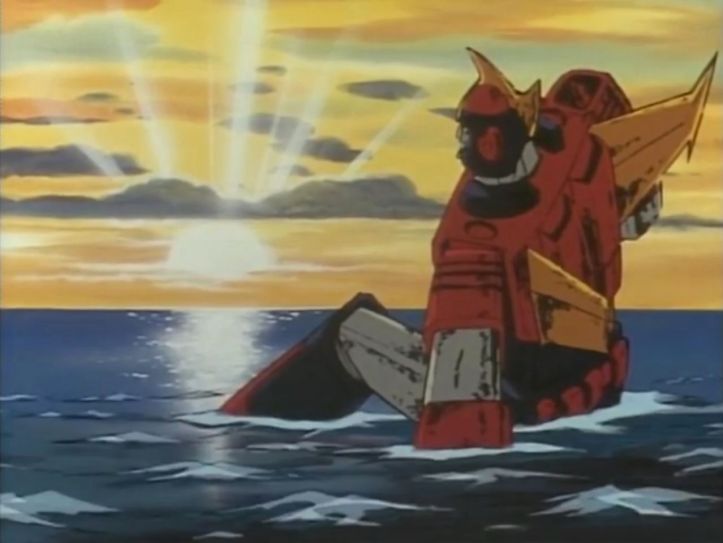
I ultimately chose to watch Zambot 3 because I like watching train wrecks; I enjoy the most soul-crushing mecha with the highest death counts, especially Tomino’s Ideon and Victory Gundam. When it comes to story, I would argue that Zambot 3 is superior to both shows. Its greatest weakness is its poor animation, paired with some secondary concerns about the weak villain. If it weren’t for its brutality and high death count I doubt I would’ve ever heard of the show, which is unfortunate. Zambot 3 deserved better; in particular, it deserved a better budget and better animation. Unless you absolutely cannot stand poor 70s animation, I recommend it. Even if off-model art makes you wince, it only runs at 26 episodes. Hell, watch the first 2 episodes for context and then skip to episode 16 if you want. This show is an early hybrid of the Super Robot and Real Robot genres and at least deserves a chance.

Really enjoyed this article.
I really love a lot of 70’s anime and have a high threshold for dated animation, this has been on the watchlist for some time as I’d heard of its infamous reputation and I like Tomino’s other stuff including Ideon a lot. It feels like a bit of a “missing link” in my mecha education, I might bump it up the que a bit. Also: I just discovered your blog and I’ll definitely be back to read more. Please check out mine if you get the chance.
LikeLiked by 1 person
I’m glad you enjoyed it! If you liked Ideon, you’ll probably like Zambot 3 (which has significantly less filler!)
Definitely checking yours out. I’m a sucker for retro anime.
LikeLiked by 1 person
So I finally got round to watching Zambot 3. It’s going to be my first review for an upcoming ongoing mecha project. I won’t go into too much depth here as that’s what the review is for but I have to say I was impressed by it considering its age. It seems to be the earliest attempt to deconstruct the super robot genre that I know of and also seems to be the evolutionary bridge between super robot and real robot shows, It’s a lot more to the point as you stated above with little time wasting. Also there are some really harrowing moments for such an old show and that ending! My god! I did not see the scene inside the Bandok fortress at the end coming at all. Thanks for not spoiling that one. That ending must have been quite mind blowing in 1977 as it really left me quite surprised now in 2017.
LikeLike